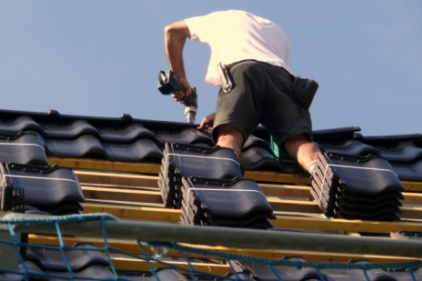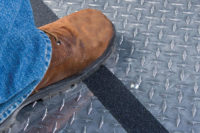Worker paralyzed after 20’ fall
Ryan Roofing Inc. in Salina, Kansas cited by OSHA

 Six months after an accident that resulted in a worker being paralyzed, OSHA has concluded its investigation into the incident and issued three citations against the employer, Ryan Roofing Inc.
Six months after an accident that resulted in a worker being paralyzed, OSHA has concluded its investigation into the incident and issued three citations against the employer, Ryan Roofing Inc.
The worker was injured after falling 20 feet from the roof of a commercial building the company was replacing on Oct. 3, 2012.
OSHA investigators determined that the company failed to ensure the integrity of a roof structure employers were working on, to provide and use fall protection systems on a low-sloped roof and to provide training on fall protection to workers. Ryan Roofing was cited for three willful violations, which are committed with intentional, knowing or voluntary disregard for the law's requirement, or plain indifference to employee safety and health.
"It is unacceptable that Ryan Roofing knowingly failed to evaluate working conditions and provide workers with fall protection to prevent severe injuries," said Charles Adkins, OSHA's regional administrator in Kansas City, Mo.
Due to the nature of the hazards and the violations cited, Ryan Roofing has been placed in OSHA's Severe Violator Enforcement Program, which mandates targeted follow-up inspections to ensure compliance with the law. OSHA's SVEP focuses on recalcitrant employers that endanger workers by committing willful, repeat or failure-to-abate violations. Under the program, OSHA may inspect any of the employer's facilities if it has reasonable grounds to believe there are similar violations at related work sites of the employer.
Proposed penalties for this investigation total $115,500. The current citations can be viewed at http://www.osha.gov/ooc/citations/RyansRoofing_682238_0401_13.pdf.*
OSHA has created a Stop Falls Web page at http://www.osha.gov/stopfalls with detailed information in English and Spanish on fall protection standards. The page offers fact sheets, posters and videos that vividly illustrate various fall hazards and appropriate preventive measures. OSHA standards require that an effective form of fall protection, such as guardrails, safety nets or personal fall arrest systems, be in use when workers perform construction activities 6 feet or more above the next lower level.
Looking for a reprint of this article?
From high-res PDFs to custom plaques, order your copy today!




